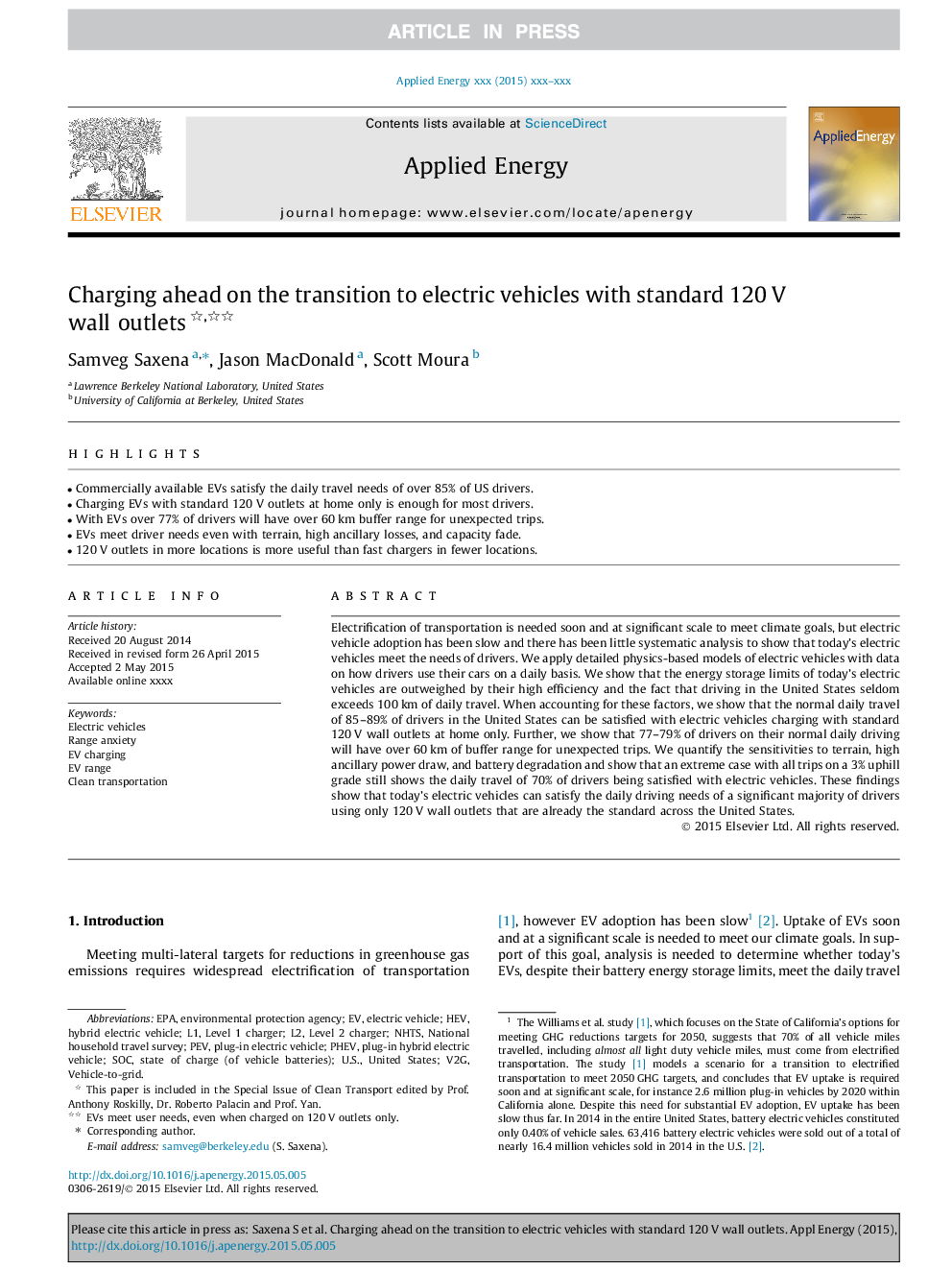| Article ID | Journal | Published Year | Pages | File Type |
|---|---|---|---|---|
| 6686065 | Applied Energy | 2015 | 9 Pages |
Abstract
Electrification of transportation is needed soon and at significant scale to meet climate goals, but electric vehicle adoption has been slow and there has been little systematic analysis to show that today's electric vehicles meet the needs of drivers. We apply detailed physics-based models of electric vehicles with data on how drivers use their cars on a daily basis. We show that the energy storage limits of today's electric vehicles are outweighed by their high efficiency and the fact that driving in the United States seldom exceeds 100Â km of daily travel. When accounting for these factors, we show that the normal daily travel of 85-89% of drivers in the United States can be satisfied with electric vehicles charging with standard 120Â V wall outlets at home only. Further, we show that 77-79% of drivers on their normal daily driving will have over 60Â km of buffer range for unexpected trips. We quantify the sensitivities to terrain, high ancillary power draw, and battery degradation and show that an extreme case with all trips on a 3% uphill grade still shows the daily travel of 70% of drivers being satisfied with electric vehicles. These findings show that today's electric vehicles can satisfy the daily driving needs of a significant majority of drivers using only 120Â V wall outlets that are already the standard across the United States.
Keywords
Related Topics
Physical Sciences and Engineering
Energy
Energy Engineering and Power Technology
Authors
Samveg Saxena, Jason MacDonald, Scott Moura,
